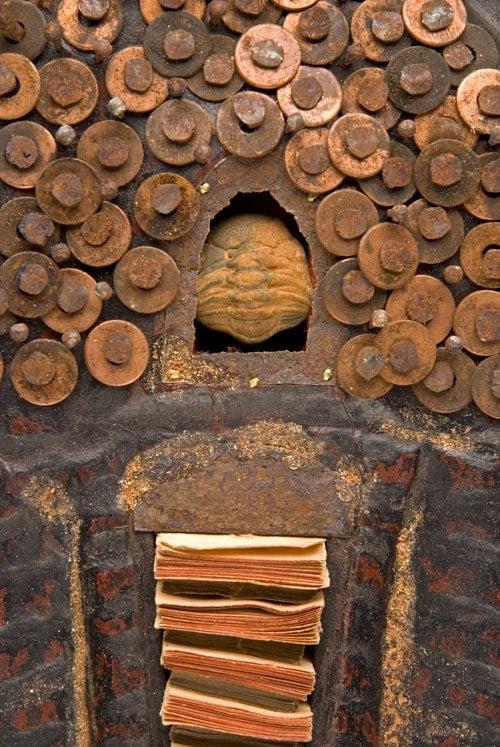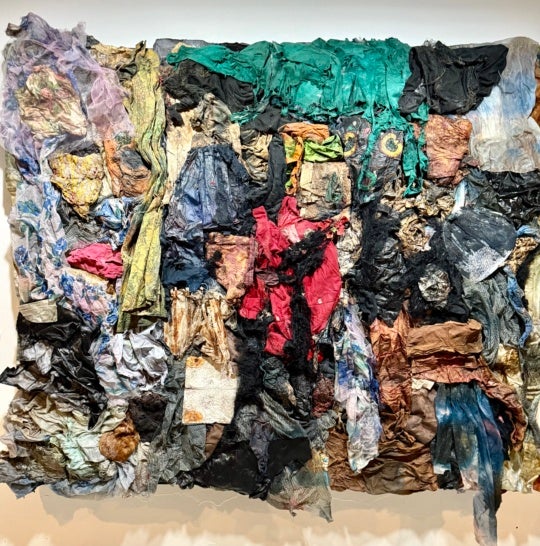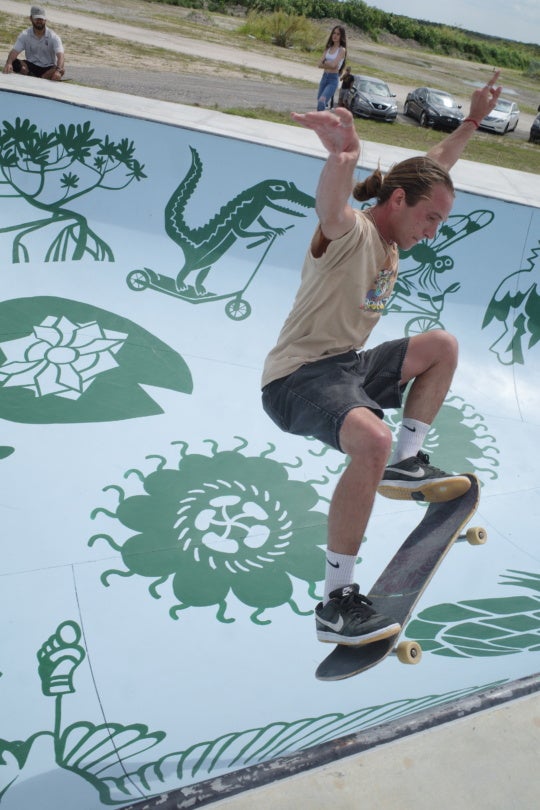
Mint Gallery recently opened its first annual juried exhibition. We spoke to Atlanta painter and Georgia State University professor Craig Drennen, who made the selections and titled the show “Live Amateurs,” a reference to nonprofessional sex performers. The exhibition, featuring, er, 69 works by 55 artists, is on view through February 7. The winner of a solo show at Mint this summer will be announced at the closing reception.
Stephanie Cash: How did you come up with the title “Live Amateurs”?
Craig Drennen: I liked the title because it was both naughty and perfectly accurate for a show about young or emerging artists who do not have professional galley representation.
SC: How many submissions were there?
CD: Around 225, give or take a few. Honestly, we were hoping for 30 or 40 applicants. When we got that many it showed just how many artists are out there, how good their work is, and how important Atlanta is to the Southeast. Submissions came from all our neighboring states, over to Louisiana and up to Virginia. We used New Americans Painting’s designation of the Southeast.
SC: What was the process like?
CD: We reviewed them online. Gallery director Henry Detweiler and the Mint staff left me completely alone. I briefly toyed with the idea of having four artists.
SC: Were they that bad? Does that mean that there were only four artists who had quality work?
CD: We could’ve had a four-artist show that looked like a museum’s project room. As attractive as that was, it seemed better to shine a bigger spotlight and include more people. In fact, the show could’ve been twice as big if we’d had more space.

SC: Were there any revelations during the selection process?
CD: I thought I knew the Southeast region reasonably well. The reservoir was deeper than I thought, and that’s good. Some of the participants are quite young. There are a couple in their 50s who are still in the early stages of their careers, but some are as young as 20.
SC: What else did you learn about the Southeast while doing this? Tell me more about these artists and who the standouts are.
CD: The work is crammed into the exhibition space, so I think we included every possible work that we could have. We decided that if we were not going to have just four artists, we’d have a display of force. Let’s just have things touching the floor. Let’s have things touching the ceiling. Let’s surround the viewer on every side.
SC: Who from Atlanta is included?
CD: Maggie Ginestra, who orchestrated a nude performance and made the props. The performers were each wearing a scarf and she dictated what would happen. Sculptor Catherine Calero, who made the interactive briefcase that contains a video and distributes fake money. There’s an abstract painting by Nam Won Choi, who’s an MFA candidate at GSU; it depicts the space between her eyes and is so abstract that it’s easy to miss what it is.
SC: What did Maggie’s performers do?
CD: They played cards and behaved in a very … unlike early ’70s performance art, there was no test of endurance or pain inflicted, which made it totally banal. But they sat at a table and were nude for four hours. The audience could interact with them to whatever degree they wanted, but usually people were very polite.
It was a packed opening. Some people attended because they were friends or family of one of the artists. They told me that this was the first art show they’ve ever attended in Atlanta, and those folks interacted with the nude performers maybe more openly than the usual art crowd.
SC: Do you think that nudity is necessary to push the boundaries?
CD: I don’t think it’s necessary at all, but I think it is a component As open as Atlanta is to performance right now, there are types of performance that still have a hard time getting shown, like anything involving nudity. I can only recall the Clifford Owens performance at the Contemporary [as part of the “Deliverance” exhibition] and one BFA student piece from three years ago. People are certainly painting the nude and photographing the nude in Atlanta. But anyone who wants to use nudity in a performance runs into a lot of obstacles
SC: Who else is memorable for you?
CD: Sophie Lvoff from New Orleans submitted a large, gorgeous still-life photo of random objects. John Duff contributed two paintings that are sort of digitally informed. There’s a great video by a man named Sam Winks, who just took a position at the Chinati Foundation in Marfa. There are about 10 people who are Virginia Commonwealth University students or alums, which I didn’t know until after the final cut.
SC: Is there much video? We don’t see a lot of video here.
CD: We were limited by our resources. If we had more equipment, we could have had twice the number of videos.

SC: Is there anything that characterizes the show overall?
CD: There was a diversity of practice that was interesting in a way that I don’t always see at some high-profile academic places elsewhere in the country.
SC: I’m trying to read between the lines.
CD: Well, there is a lot between those lines. There’s a healthiness here that may, in part, be the result of us not being at the center of Rome, so to speak. There’s a spark of creativity that is being nurtured here that I don’t see on the Morgan Avenue stop on the L train in Bushwick, where a lot of work looks alike.
SC: Is there any work that is distinctly southern?
CD: There were photographers who submitted who probably would have identified as “Southern photographers.” But the work was some of the least compelling.
SC: You said the show is densely hung. How is it set up?
CD: I tried to anchor the corners. There are folks in each of the corners that seem to epitomize a trend. In one corner, where you will see Sophie Lvoff’s photo, there is a sequence of work that deals with the idea of the accumulation of things. That’s an interesting corner. It was interesting to see how they’re tackling similar ideas but in very different ways.
Right above the door is a compelling video by Ion Yamazaki. He’s a Japanese American artist whose identity shapes his performance in the video. He’s wearing a sports jacket and shouting a phrase of belittling self-identity. It’s called Say It Loud, I’m Jap and I’m Proud.
SC: How many hours did you spend weeding through the submissions?
CD: I spent many hours, but however many hours I spent, Henry Detweiler spent three times as many.





